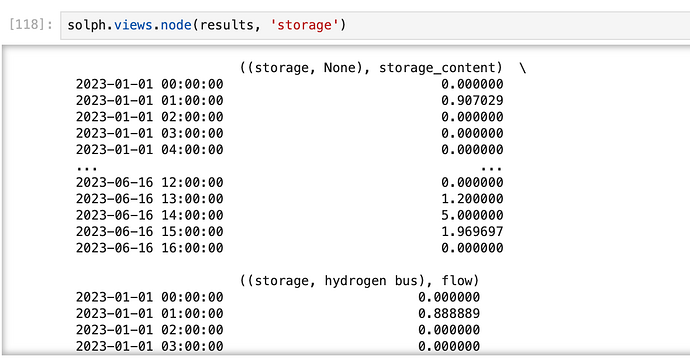Hi,
can anyone tell me how I can see the storage_content of my storage in the results?
I defined my storage this way:
storage = solph.components.GenericStorage(
label="storage",
nominal_storage_capacity = hydrogen_storage_capacity,
inputs={
b_h2: solph.Flow(
nominal_value=hydrogen_storage_input_flow,
variable_costs=hydrogen_storage_variable_costs,
nonconvex=solph.NonConvex()
)
},
outputs={
b_h2:solph.Flow(
nominal_value=hydrogen_storage_output_flow
)
},
loss_rate=hydrogen_storage_loss_rate,
initial_storage_level=hydrogen_storage_initial_storage_rate,
#inflow_conversion_factor=0.9,
#outflow_conversion_factor=0.9
)
And tried several commands like this:
results[(storage, None)]['sequences']["storage_content"]
But I get this error message:
---------------------------------------------------------------------------
KeyError Traceback (most recent call last)
Cell In[146], line 1
----> 1 results[(storage, None)]['sequences']["storage_content"]
KeyError: ("<oemof.solph.components._generic_storage.GenericStorage: 'storage'>", None)
In this picture you can see that the node exist:
Thanks for your help.
Kind regards
Luca
